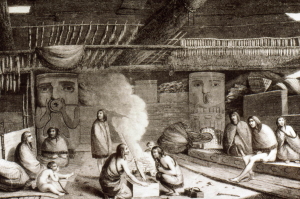Guest Post from Jocelyn Reekie: This is one of two posts coming your way from writer, publisher and Scribes editor Jocelyn Reekie, with some thoughts on the beginning stages of a writing project. Jocelyn is a regular reviewer for Canadian Materials Magazine and a multidisciplinary artist with her own website: JReekie Books & Art, http://www.jocelynmreekie.com/tag/jocelynmreekie/, where you can follow her personal blog.
What Every Good Story Needs
How Stories Announce Themselves
…For most writers, whatever the exercise that precedes the story, there comes the moment when the initiating impulse—whether it be character, or events, or ideas—has triggered a fluttering throb of excitement…that will not subside—increases rather—until the story has been lived through, written through, dreamed through to its end. At least some of that excitement comes from the urgent desire to see what manner of creature this thing will insist on becoming. (Jack Hodgins, A Passion for Narrative, http://www.jackhodgins.ca/)
If you are reading this, I’ll assume you have a story that is pressing you to write it. You likely have folders of relevant research, ideas for the story, and character sketches for each main character. All of these can be added to as the writing takes shape and the story develops.
Multiple-award-winning author, Jack Hodgins, says: there is no beginning, end, or proper sequence for the act of writing fiction. If you are writing a nonfiction narrative (memoir, biography, autobiography), this is also true.
That said, to bring a story fully to life, there are rules a writer needs to follow. Whether one writes fiction or nonfiction narratives, the rules are essentially the same, and if the aim is to create a work that engages readers from beginning to end, a writer needs to know them.
Every Good Story Includes:
•Setting—Setting offers colour; atmosphere; can contribute to action, affecting character; can become a major character itself; can be a metaphor; time—the passage of time. Stare at your setting until you discover what it has to offer you. (Hodgins, A Passion For Narrative)
•Believable Characters—Characters are those primary substances to which everything else is attached. (William Gass, Fiction and the Figures of Life)
To be believable, characters must act in contextually believable ways. All the time.
•Conflict
•Tension—conflict brings tension. Stories build through escalating tension. …Tension comes from unmet desire. (James, Go Organic, Writer’s Digest, March/April 2013). What do your characters want, what stands in their way, what are they doing to get it? Escalating tensions equals rising stakes. Keeping the stakes rising is what keeps the reader involved. When the conflict ceases, the story ends.
•Causality—everything that happens must be caused by the thing that precedes it.
•Downturn—a moment when everything seems lost.
•Climax—an encounter that turns things around.
•Transformation—either of a character or a situation, or both. It’s irreversible. There is no going back.
•Conclusion—must be a direct result of all that has gone before, and in retrospect could not be other than it is.
Jocelyn Reekie, May 2014


